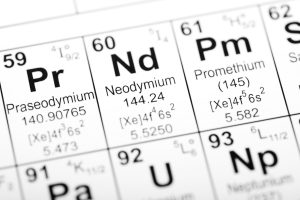On June 27, 2025, the Texas Supreme Court issued its long-awaited decision in Cactus Water Services, LLC v. COG Operating, LLC, No. 23-0676, resolving a high-stakes dispute over the ownership of produced water—a vexing byproduct of oil and gas production that is increasingly being viewed as a resource rather than waste—and its constituents. The Court held that, unless expressly reserved, a deed or lease conveying oil and gas rights also conveys produced water as part of the mineral estate. The decision not only reinforces the ownership of produced water under Texas oil and gas law, but also offers insight into how emerging practices such as direct lithium extraction (DLE) from produced water might be treated under existing legal frameworks.
Articles Posted in Critical Materials
Beyond the Executive Orders: Legislative Proposals to Strengthen the U.S. Critical Minerals Supply Chain
 Critical minerals are the backbone of modern technologies and national security, powering everything from advanced semiconductors and electric vehicle batteries to missile guidance systems and renewable energy infrastructure. As the global economy transitions to more diverse energy technologies, the demand for these essential materials has surged. Despite their vast importance and usefulness, the United States remains heavily dependent on foreign sources—particularly China—that dominate the global supply chain for critical minerals. This reliance threatens supply chain stability, leaving key American industries vulnerable to disruptions, price manipulations and political leverage.
Critical minerals are the backbone of modern technologies and national security, powering everything from advanced semiconductors and electric vehicle batteries to missile guidance systems and renewable energy infrastructure. As the global economy transitions to more diverse energy technologies, the demand for these essential materials has surged. Despite their vast importance and usefulness, the United States remains heavily dependent on foreign sources—particularly China—that dominate the global supply chain for critical minerals. This reliance threatens supply chain stability, leaving key American industries vulnerable to disruptions, price manipulations and political leverage.
AI Needs Critical Materials, Fast! But From Where?
Critical materials—the collective term for metals and minerals essential for all kinds of advanced technology and clean energy—are vital to the growth of artificial intelligence (AI), which has become pervasive in everyday life. AI hardware relies on familiar elements like aluminum, silicon and copper, and unfamiliar elements like gallium, germanium, palladium and neodymium to support the computational power, data transmission, and cooling systems required to process vast amounts of data at high speeds.
Lithium for Batteries from Geothermal Brine
 If all goes as planned, solar, wind and other clean energy technologies will help us abandon carbon emissions for good. But many green power sources perform their best only when nature cooperates, so an important (and sometimes overlooked) component of the energy transition is the ability to store electricity for a rainy or calm day. Lithium is the ingredient of choice for electric vehicle batteries, solar panels and grid elements. As these innovations ramp up, lithium demand is expected to soar by 90% over the next two decades, driving a surge in production efforts. Some experts predict a deficit in the mineral by as soon as 2025.
If all goes as planned, solar, wind and other clean energy technologies will help us abandon carbon emissions for good. But many green power sources perform their best only when nature cooperates, so an important (and sometimes overlooked) component of the energy transition is the ability to store electricity for a rainy or calm day. Lithium is the ingredient of choice for electric vehicle batteries, solar panels and grid elements. As these innovations ramp up, lithium demand is expected to soar by 90% over the next two decades, driving a surge in production efforts. Some experts predict a deficit in the mineral by as soon as 2025.
Lunar Natural Resources: A Tour of a New Horizon
 With the success of the Chandrayaan-3 this August, India became the fourth country to land a spacecraft on the moon. Improved fabrication methods like 3D printing, plus larger-scale production of essential materials for remote activity, have made space technology cheaper than ever to build. Even conservative investors are financing ventures, thanks to the moon economy’s estimated $100 billion near-term market value. Many of the planned endeavors are exploratory in nature, but they could pave the way for the eventual commercialization of the moon—namely, establishing permanent bases and mining lunar water and regolith (lunar soil).
With the success of the Chandrayaan-3 this August, India became the fourth country to land a spacecraft on the moon. Improved fabrication methods like 3D printing, plus larger-scale production of essential materials for remote activity, have made space technology cheaper than ever to build. Even conservative investors are financing ventures, thanks to the moon economy’s estimated $100 billion near-term market value. Many of the planned endeavors are exploratory in nature, but they could pave the way for the eventual commercialization of the moon—namely, establishing permanent bases and mining lunar water and regolith (lunar soil).
Blue Gold: Critical Water for Critical Energy Materials
 As demand increases for low-carbon technologies to power the energy transition, the acquisition of critical materials—so-called given their integral role in the transition of energy activities—is becoming increasingly important. As described in our previous post, such critical materials include rare earth elements (REE), lithium, nickel and platinum group metals. In short, the transition endeavors to reduce use of one non-renewable resource—fossil fuel—by significantly ramping up our use of other non-renewable resources. While critical material discussions have largely centered on the availability and economic extractability of the minerals themselves, Pillsbury is also counseling on the other resources needed to bring the materials to market at the scales required for our decarbonization goals.
As demand increases for low-carbon technologies to power the energy transition, the acquisition of critical materials—so-called given their integral role in the transition of energy activities—is becoming increasingly important. As described in our previous post, such critical materials include rare earth elements (REE), lithium, nickel and platinum group metals. In short, the transition endeavors to reduce use of one non-renewable resource—fossil fuel—by significantly ramping up our use of other non-renewable resources. While critical material discussions have largely centered on the availability and economic extractability of the minerals themselves, Pillsbury is also counseling on the other resources needed to bring the materials to market at the scales required for our decarbonization goals.
Critical Materials for the Energy Transition: Of “Rare Earths” and Even Rarer Minerals
 As the world pursues ambitious net-zero carbon emission goals, demand is soaring for the critical materials required for the technologies leading the energy transition. Lithium may be the most well-known of these inputs due to its usage in batteries for vehicles and consumer electronics, but roughly 50 other minerals are central to energy transition technologies. During the coming years, producers, manufacturers and end-users will be increasingly exposed to the roles played by “rare earth” elements (roughly, atomic numbers 57 to 71), platinum group metals, and other materials.
As the world pursues ambitious net-zero carbon emission goals, demand is soaring for the critical materials required for the technologies leading the energy transition. Lithium may be the most well-known of these inputs due to its usage in batteries for vehicles and consumer electronics, but roughly 50 other minerals are central to energy transition technologies. During the coming years, producers, manufacturers and end-users will be increasingly exposed to the roles played by “rare earth” elements (roughly, atomic numbers 57 to 71), platinum group metals, and other materials.
 Gravel2Gavel Construction & Real Estate Law Blog
Gravel2Gavel Construction & Real Estate Law Blog


